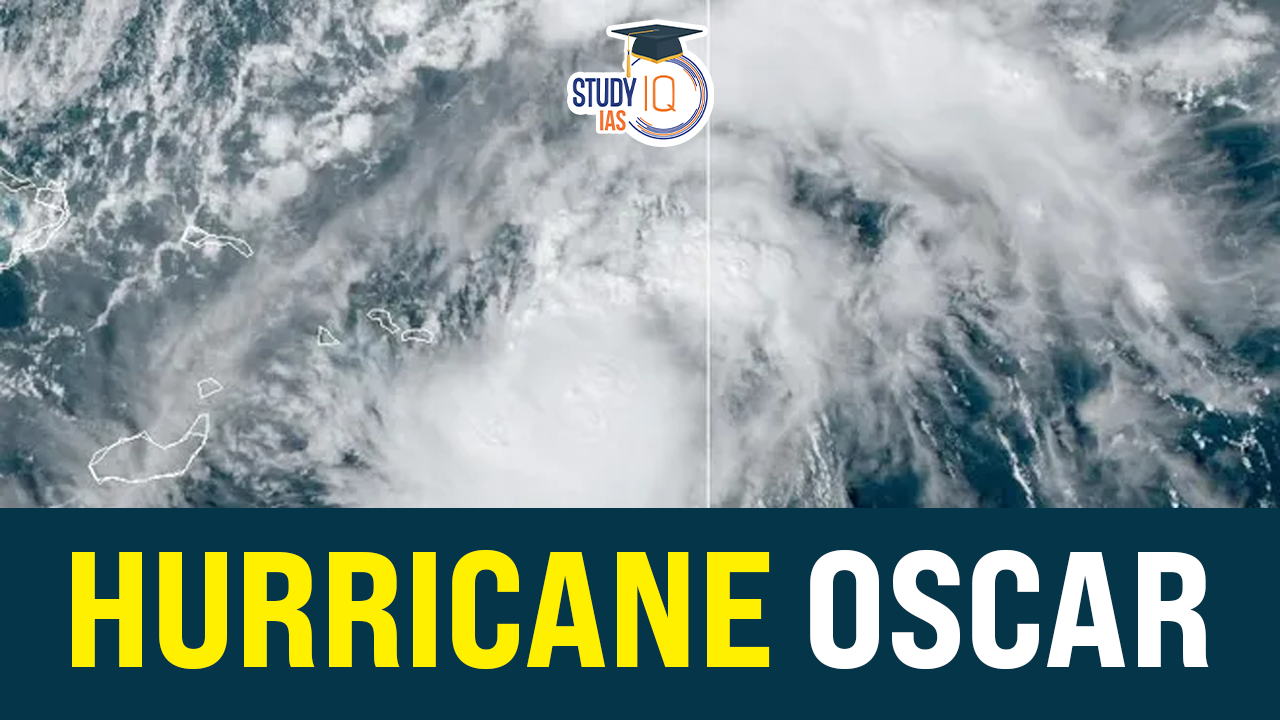Table of Contents
Hurricanes are among the most destructive natural disasters that can affect multiple countries across various regions. Recently, Hurricane Oscar caught the attention of meteorologists and global observers as it made landfall, causing widespread damage. In this article, we will explore the development of Hurricane Oscar, its impact on Cuba and the Bahamas, and its broader relevance for disaster preparedness. We will also discuss the role of international meteorological organizations in hurricane tracking and forecasting.
What is Hurricane Oscar?
Hurricane Oscar is a tropical cyclone that developed in the Atlantic Ocean and intensified into a Category 1 hurricane. It is notable for its small size, with a wind field of about 10 kilometers (6 miles) across, making it one of the smallest recorded hurricanes. Oscar made landfall in eastern Cuba and the Bahamas in October 2024, causing heavy rainfall, flooding, and significant damage in these regions.
The storm brought winds of up to 120 kilometers per hour (75 mph) and led to fatalities, damage to homes, and widespread power outages. Despite its small size, Hurricane Oscar caused considerable destruction, particularly in low-lying coastal areas, and posed significant challenges for meteorologists, as it defied initial forecasts by rapidly intensifying into a hurricane.
Formation of Hurricane Oscar
Hurricane Oscar developed as a tropical storm in the Atlantic Ocean. Due to favorable conditions, it rapidly intensified into a Category 1 hurricane. This intensification was unexpected, as most forecast models had predicted the storm would remain a tropical depression or low-intensity storm. The National Hurricane Center (NHC) in the U.S. and the Cuban Institute of Meteorology (INSMET) closely monitored the storm as it approached the Caribbean.
Hurricane Oscar is known for being one of the smallest hurricanes ever recorded, with a wind field extending only about 10 kilometers (6 miles) across. However, despite its small size, Oscar caused significant rainfall and wind damage in affected regions.
Path and Impact of Hurricane Oscar
Oscar first made landfall on Great Inagua in the Bahamas, damaging homes and prompting evacuations. By Sunday, it had reached eastern Cuba, where it hit Guantánamo province near Baracoa as a Category 1 hurricane. The storm brought heavy rains, flooding, and strong winds, which caused widespread damage. The winds reached 75 mph (120 kph) at landfall, and flooding impacted low-lying areas. The provinces of Guantánamo, Holguín, and Las Tunas were particularly affected by coastal flooding.
Key Impacts in Cuba:
- Flooding: Severe flooding in several provinces resulted from heavy rainfall, particularly in Guantánamo. Over 300 millimeters (12 inches) of rain was recorded, and some areas faced flash floods and landslides.
- Deaths and Damage: Six fatalities were reported, and more than a thousand homes were damaged, especially in low-lying areas. Coastal towns, such as Baracoa, experienced severe damage.
- Power and Water Outages: Cuba was already facing a major power outage before the storm, exacerbating the crisis by knocking out water and electricity supply to many regions.
As Oscar moved away from Cuba, it weakened into a tropical storm, but heavy rainfall continued to affect eastern Cuba. The U.S. National Hurricane Center issued warnings about potentially deadly flash floods and landslides in the region. Oscar eventually moved toward the Bahamas, where it continued to weaken.
Meteorological Significance of Hurricane Oscar
Oscar is a noteworthy hurricane due to its rapid intensification and its small size. It defied meteorological models, which failed to predict its quick evolution into a Category 1 hurricane. This highlights the challenges in predicting hurricanes, especially when multiple variables such as ocean temperatures and atmospheric pressure play a role.
Key Meteorological Factors:
- Wind Speeds: Maximum sustained winds of Oscar reached 120 kilometers per hour (75 mph) at its peak.
- Pressure Levels: The storm had a central pressure of 1001 hectopascals, indicative of its strength.
- Small Wind Field: Oscar’s wind field was unusually small, about 10 kilometers across, which made it the smallest recorded hurricane. However, despite its size, it still caused considerable damage due to its wind speeds and associated rainfall.
Disaster Management and Preparedness in Response to Hurricane Oscar
Hurricane Oscar exposed the vulnerabilities of regions like Cuba and the Bahamas to natural disasters. Both countries activated emergency response measures, including evacuations, distribution of relief supplies, and emergency warnings. However, the storm still resulted in significant damage due to the overwhelming intensity of rainfall and flooding.
Cuba’s Disaster Response:
Cuba’s National Civil Defense implemented precautionary measures such as evacuating residents from low-lying areas and preparing emergency shelters. The government worked with international organizations to mitigate the effects of the storm.
Bahamas’ Response:
In the Bahamas, where Oscar made landfall first, many residents were evacuated from the Great Inagua area. The Bahamian government issued tropical storm warnings and provided updates on the progress of the storm.
Global Response and Forecasting:
Oscar also highlighted the critical role played by global forecasting agencies like the National Hurricane Center (NHC) and INSMET. These organizations provided regular updates, advisories, and warnings that were crucial in disaster preparedness.
For UPSC, topics related to disaster management emphasize the need for:
- Early Warning Systems: Timely and accurate predictions can save lives by allowing early evacuations and emergency planning.
- Community Resilience: Education on disaster preparedness, evacuation drills, and resilient infrastructure is key to reducing the long-term impact of hurricanes.
- International Cooperation: Countries in hurricane-prone regions often collaborate on disaster management through information sharing, resource mobilization, and relief efforts.
Hurricanes and Climate Change
Climate change is directly linked to the increasing frequency and intensity of hurricanes. Warmer ocean temperatures fuel the intensity of storms, leading to stronger hurricanes with more destructive potential. In recent years, meteorologists have observed more rapid intensification of storms, as was the case with Hurricane Oscar.
Hurricane Oscar UPSC
Hurricane Oscar serves as an important case study for UPSC aspirants, illustrating key concepts in climatology, disaster management, and the challenges of weather forecasting. The storm’s rapid intensification, its impact on vulnerable regions like Cuba and the Bahamas, and the global response to the disaster underscore the importance of international cooperation and disaster preparedness.
Understanding hurricanes like Oscar is essential for addressing broader topics such as climate change, international disaster management frameworks, and the role of meteorological forecasting in mitigating the impact of natural disasters.


 Industrial Parks in India: Driving Manuf...
Industrial Parks in India: Driving Manuf...
 National Maritime Heritage Complex (NMHC...
National Maritime Heritage Complex (NMHC...
 Reforming Fertiliser Subsidy in India: N...
Reforming Fertiliser Subsidy in India: N...

























